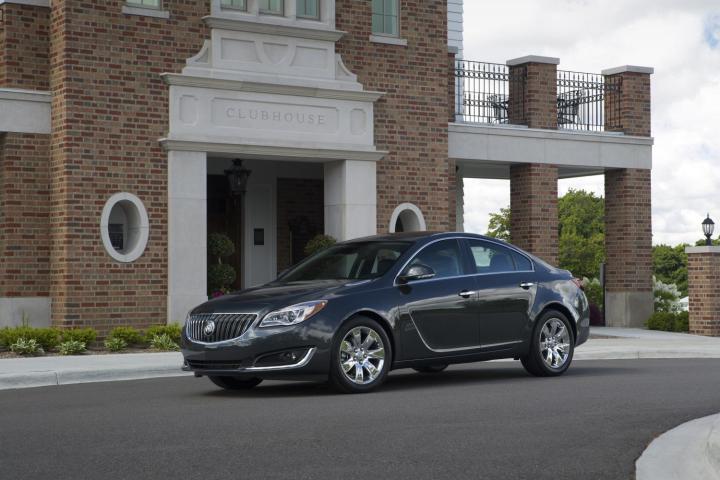
There hasn’t been a cool Buick since the ‘80s Grand National. OK I liked the ‘90s Roadmaster; but I have strange taste. To my credit, though, it was really just an Impala in drag. But Buick is desperately trying to get back to its cool, turbocharged roots with the 2014 Regal.
The 2014 isn’t a completely new car, but engineers have been some important upgrades. The engine is a new, direct-injected 2.0-liter turbocharged four-cylinder. If the new engine weren’t enough; there is also a new turbocharger. Its improved twin-scroll design makes it even more turbo-y than the last generation.
The result is that the car produces 259 horsepower and a very impressive 299 pound-feet of torque. That’s more than the Mercedes-Benz CLA 250, one of the Regal’s competitors, can dish out.
The car even looks OK. Its lines remind me of a Volvo S60, and, these days, that’s a good thing.
Unfortunately, while gas mileage is improved from last year’s model it’s still not great. The car manages a respectable 31 highway mpg, but a barely-adequate 21 mpg in the city. For an out-and-out performance sedan, these numbers would be okay. For an all-rounder, though, they just aren’t good enough. Heck, GM’s brand-new Corvette manages 29 highway mpg and its engine is more than twice the size.
The base car is reasonably priced, starting at around $30,000 – especially with that new turbo engine bolted between the frame rails. But I wonder how many people under 70 are going to drive past the Audi and Mercedes dealership to buy one of these? Buick says the Regal has its lowest average buyer age in the Buick line, which would be impressive if that average age weren’t 56. The average age of a Mercedes buyer is 56. While this age is brag worthy for Buick, it’s horrifying for Mercedes.
All things considered, the Regal isn’t selling well. But that’s not too terrible. You see, the Regal isn’t really designed for us here in the United States; it is for the Chinese market. I don’t know precisely what Chinese consumers see in Buicks, but that hasn’t stopped it from being one of the most popular brands in China.
Over in China, a smooth ride and lots of interior space seem to be what the drives consumers. But, across the water, I am just not sure that those things are enough.
That brings us back to where we started. It’s not just that a lot of the Buicks of the last twenty years have been terrible, though they definitely have. The mid ‘90s Buick Century has got to be one of the worst ideas GM ever had. It’s also that Buick hasn’t made a car that stands out in a long, long time.
That’s why, in the United States at least, most Buick owners are paying for their cars with Social Security checks. The 2014 Regal might end up being a good car; it might even end up being worth the money you pay for it, but I doubt anyone is going to think it’s a real successor to the good old days of the turbocharged Buick GNX.


